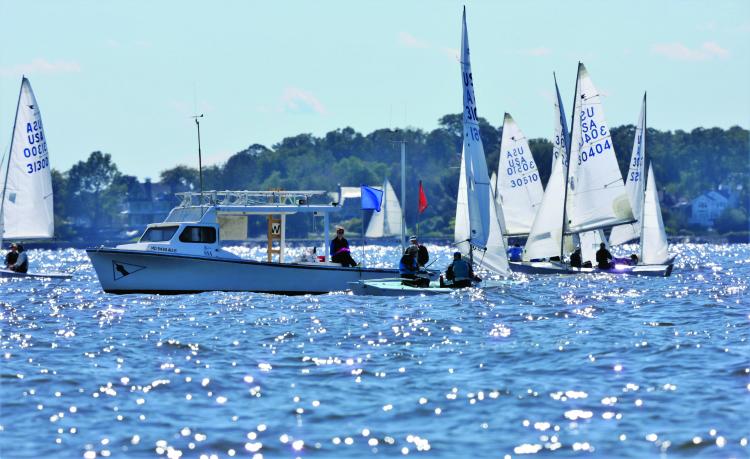Using Race Committee Knowledge To Help You Succeed on the Racecourse
It’s pretty clear that without race committees, we wouldn’t have sailboat racing. They set our marks, let us know what the course will be, and keep track of our finishes. At the end of a regatta, podium finishers thank them for their efforts.
But as with any relationship, putting a little more into it lets you get a lot more out of it. There are two primary ways to do this: by putting yourself in their shoes and by using what the RC knows to help you succeed.
Volunteering: Help Racing, Help Yourself!
The vast majority of race committees are made up of volunteers, and they can always use more! Having more active sailors on race committee leads to better racing for the simple fact that there are more hands to perform the many tasks—but also because active sailors bring savvy minds to the effort.
Sailing and race committee-ing are two different adventures. There’s a world of knowledge that top-notch RC folks know that most sailors don’t think about when they head out to the race course. Spending time with those RC minds can help you as you consider how to get around the race course.
In addition to theory about wind and currents, you’ll gain practical knowledge in your time volunteering. From the process of how the race committee shares information (notices of race, sailing instructions, amendments, and such) and how they are shared with racers (especially in Covid-safe ways), to the nitty-gritty (how an RC properly changes or shortens a course, when they can move a starting mark, and a refresher on all those signal flags!), it’s a terrific immersive experience.
Use What They Know: Gain Advantages!
Now that you’ve spent some time on RC, you know the kind of chatter that happens over the radio to make racing possible and the kind of decisions they need to make to set up an effective race course. Channel that kind of conversation into your head, and let that be input into your decision making.
Some of those decisions can be pretty big picture and can help you decide how to attack the starting line and first beat in a way that’s right for you. For example, in a large fleet to “encourage” the fleet to more effectively distribute themselves across the starting line to avoid the classic bunching up at the signal boat end of the line, the RC may favor the pin end by a few degrees. Or if there’s a lot of current flowing mostly perpendicular to the course, they may favor one end of the line. Being savvy to look for those advantages at the start can help set you up for a boost when the starting gun fires.
Similarly, keeping “how would the RC think about this” in mind on course settings relative to wind shifts can be helpful. In an oscillating breeze, the weather mark can’t magically be in the perfect spot all the time. Knowing the range through which the breeze is shifting and considering where the mark is set in that range can help you decide which side of the course to work on the first beat. In a persistent shift, think about where the breeze is now and where it’s expected to trend. Some race committees may “overachieve,” dropping the weather mark in anticipation of breeze that hasn’t yet materialized. Know that RC is taking wind readings throughout their time on the water. If they move the weather mark to the right for your second beat and you don’t know why, there just could be a righty shift in your future.
On a much more local scale, the RC can “tell” you helpful information. For example, is there current that might push you over the line, or is it running along the line, creating potential openings at one end or the other? You can look for current flow around both the signal boat and the pin end of the line. You can also check to see whether the flags flying on an anchored signal boat are flying straight back or whether they’re angled to one side. If angled, it may be that current is pushing the hull of the boat—but of course the flags still fly with the breeze. (Be sure to check whether the signal boat has set a second anchor to hold the boat in a certain direction!)
Some classes allow competitors to carry and listen to RC conversations on radios while racing. If they do, take them up on the offer! You can learn a lot about the race course and get a heads-up on when they are going in to the next starting sequence.
So much of sailboat racing is about communication. When developing your relationship with the race committee, be sure to say two things: “thank you” and “when can I volunteer with you?”
~By Kim Couranz





